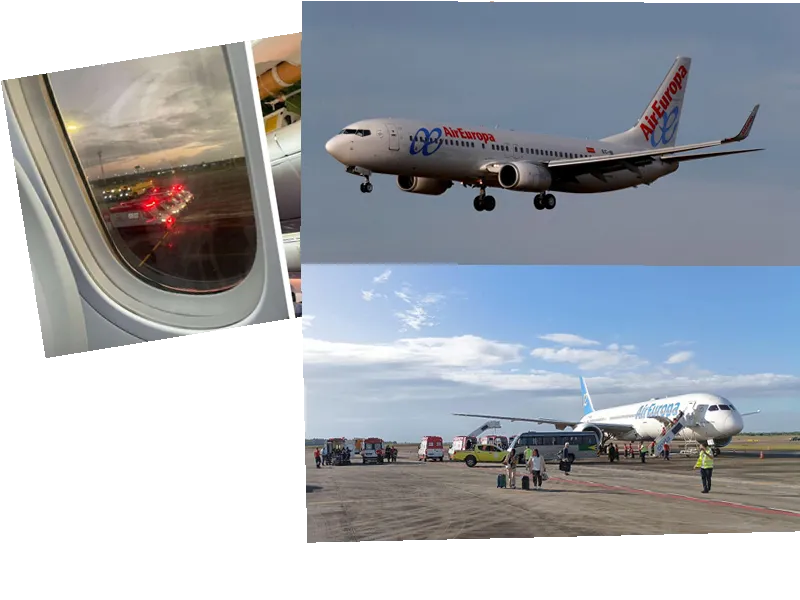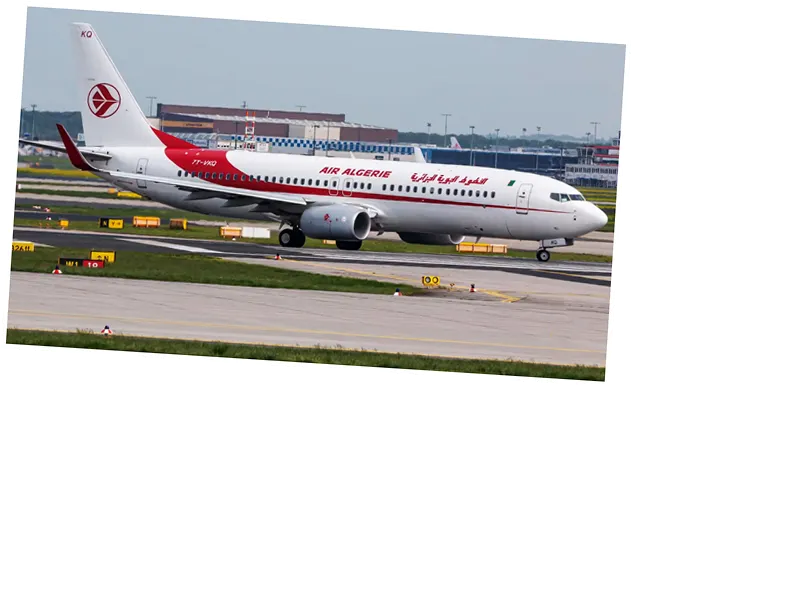Air Europa Flight Encounters Severe Turbulence, Makes Emergency Landing in Brazil
An Air Europa Boeing 787-9 Dreamliner, en route from Madrid to Montevideo, was forced to make an emergency landing in Natal, Brazil, following severe turbulence. The incident occurred in the early hours of Monday, resulting in multiple injuries among the 325 passengers on board. The turbulence was so intense that it caused passengers to hit the ceiling and led to significant cabin damage.
The flight, designated UX045, departed Madrid late Sunday night and was scheduled to arrive in Montevideo early Monday. However, at approximately 2:32 a.m., the flight crew requested an emergency landing at Natal airport, located 4,000 km from Montevideo. According to Air Europa, Natal was the quickest airport capable of providing the necessary medical care for the injured passengers.
Injuries and Immediate Response
Upon landing, around 30 passengers, hailing from Spain, Uruguay, Israel, Germany, and Bolivia, were transported to local hospitals in Natal. Most injuries were minor, including scratches, bruises, and minor trauma, but some passengers suffered more severe injuries such as fractures. Eleven passengers remained hospitalized on Monday afternoon, with four in stable condition awaiting further tests.
Eyewitness accounts describe the turbulence as sudden and violent, with passengers being lifted from their seats and some hitting the ceiling. Photos and videos shared on social media depicted the aftermath, showing broken ceiling panels and exposed pipes. One passenger, Mariela Jodal, shared images of the cabin's internal structure and described how some passengers were stuck to the ceiling during the turbulence.
Increasing Concerns Over Flight Turbulence
This incident is part of a worrying trend of increasing turbulence-related emergencies in aviation. Scientists attribute the rise in turbulence to climate change, which has led to higher temperatures and changes in wind patterns at high altitudes. Research from the University of Reading indicates that severe turbulence incidents on transatlantic flights have increased by 55% between 1979 and 2020.
Air Europa has faced criticism from passengers for its handling of the situation, particularly regarding communication and care during the emergency. The airline announced that uninjured passengers would be transferred to Recife, where they would continue their journey to Montevideo. Meanwhile, the damaged aircraft remains in Natal for an assessment of the extent of the damage.
- The severe turbulence experienced by Air Europa flight UX045 resulted in a chaotic scene inside the cabin. Passengers described the turbulence as initially mild before a sudden drop caused many to be thrown from their seats. Those not wearing seatbelts were particularly affected, with some being lifted into the air and hitting the ceiling.
- Emergency services were quick to respond upon the plane's landing in Natal. Numerous ambulances were on site to transport injured passengers to local hospitals. Despite the severity of the turbulence, the flight crew managed to land the plane safely, preventing further injuries.
- The incident has sparked discussions about the impact of climate change on aviation safety. Increased temperatures and altered wind patterns are believed to contribute to more frequent and severe turbulence. This has raised concerns among airlines and passengers alike, emphasizing the need for improved turbulence prediction and management technologies.






